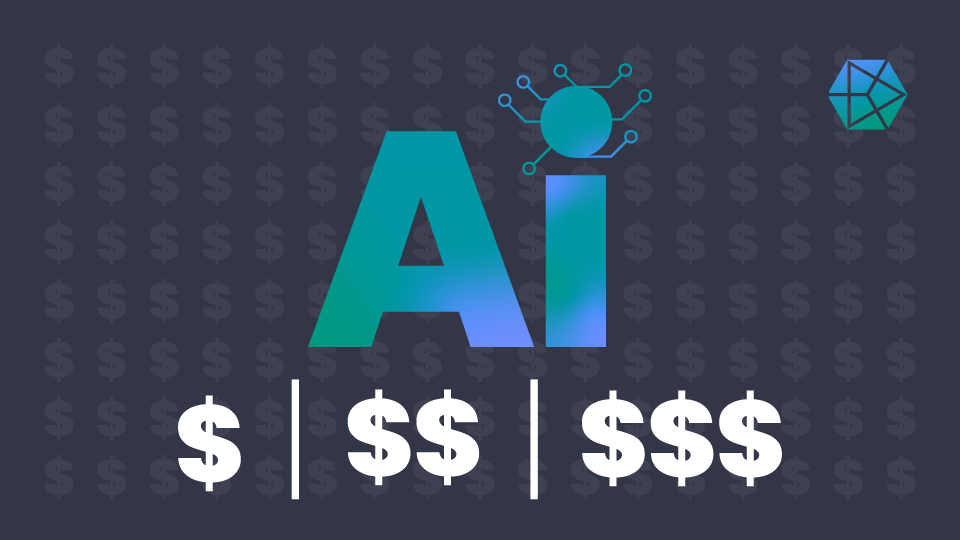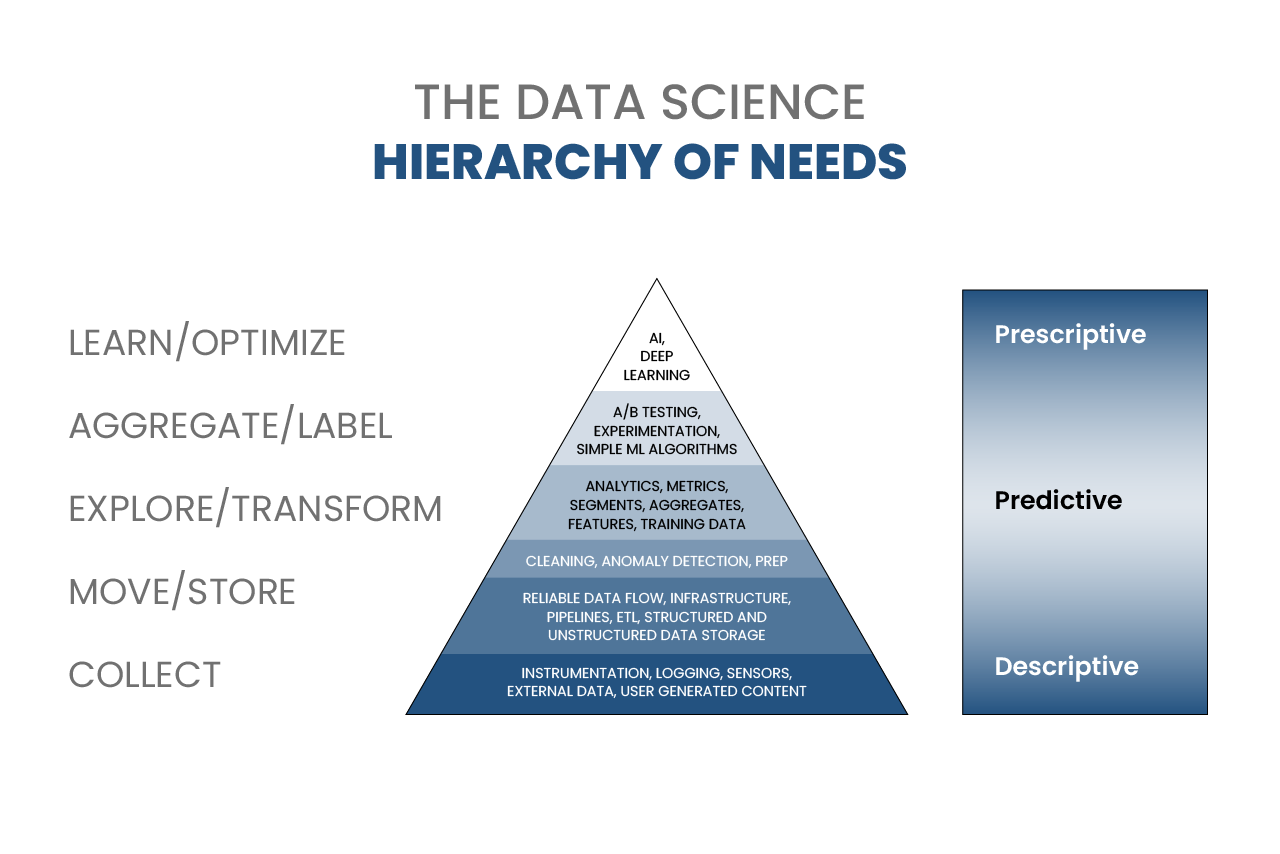
When looking into artificial intelligence development services, many companies can get sticker shock when it comes to the AI app development costs. With everything that goes into the cost of AI development, the project can get very expensive.
However, there are low-cost ways of getting started with AI. Understanding the cost of AI app development can help you manage your expectations and find a project that fits your budget. Working with a partner such as Gigster can provide industry-leading AI experts to guide you through the most cost-effective artificial intelligence application development for your needs.
So, are we in an AI cost crisis? How much does it cost to develop artificial intelligence applications, platforms, and services?
Type of Artificial Intelligence Development Project
The first consideration for how much your artificial intelligence development will cost is the type of project you’re looking for. There are multiple ways of incorporating AI into your development initiatives. The level of customization that is required is one important question that will impact the overall cost.
Training a large language model (LLM) from scratch is a much more costly endeavor. LLMs, which are AI models such as ChatGPT which generate language and perform other natural language processing tasks, require a large amount of data, computational power, and time.
Fine-tuning or adapting an existing LLM to a specific task or dataset is much less expensive and may actually yield better results. This is also the case for custom vs off-the-shelf AI solutions. At Gigster we generally recommend adapting an existing AI model (if there is one that fits your project’s needs) to avoid the high app development costs of training a model.
Enterprise AI Today makes a case for getting a quick win with an off-the-shelf AI tool to prove the positive ROI of artificial intelligence and set your company up for future success. Starting with a simpler project scope will help keep the cost of AI down and make it easier to achieve an ROI. Here are a few things that can impact an AI project’s scope:
- What level of intelligence does your AI need? Basic automation tools are less costly than more advanced systems.
- What is the quantity and quality of data required to train your LLM? Data collection, storage, and management are some of the most significant costs of AI development projects.
- What is your desired level of accuracy? Achieving 95% accuracy is fairly simple. Training and fine-tuning a model to reach higher levels of accuracy requires much more time, effort, and money.
- How complex is your AI implementation? Training an AI model to do one thing well is less costly than a solution that needs to be more flexible and integrate with more business functions.
Cost of AI App Development
Obviously, more complex, custom AI models using large datasets are more expensive. But what do those costs look like? And what decisions can you make to minimize your AI app development costs?
Below is a breakdown of the cost of AI app development. While it is good to get a better understanding of the individual costs, you should also consider the total cost of ownership before committing to a large-scale AI development project. You must plan for the implementation expenses of AI and the annual maintenance, inference, and scaling costs to help decide the project scope that is right for your business.
While the below steps make it seem like AI app development is a complicated, cost-prohibitive endeavor, working with a fully managed AI software development company can help simplify and streamline this process based on your needs and budget.
Data Collection and Management
According to CloudFactory, 80% of an AI project’s time is spent on collecting, organizing, and labeling data. This cost will depend on your AI maturity and data readiness level. The first several levels of the data science hierarchy of needs involve collecting and organizing data before it is ready for use in AI projects.

Image credit: Monica Rogati.
Gathering large amounts of high-quality data can be time-consuming and expensive. Storing vast datasets also requires significant storage solutions. Finally, data needs to be cleaned and labeled before it can be used for training, which often involves substantial manual effort and cost.
Computational and Infrastructure Costs
How much does it cost to build an AI system? Training and running an LLM or other AI is highly resource-intensive. The computational resources and infrastructure include:
- Hardware: The initial investment for the high-performance GPUs, TPUs, or other specialized hardware necessary for training and running AI models can be substantial.
- Cloud Services: Cloud platforms like AWS, Google Cloud, or Azure charge based on usage, which can add up quickly for large-scale projects.
- Servers and Networking: Setting up and maintaining servers and network infrastructure incurs additional costs.
- Security: Implementing robust security measures to protect data and infrastructure is essential, adding to overall costs.
- Electricity: Running high-performance hardware for extended periods consumes a significant amount of electricity, contributing to operational costs.
Licensing and Software
Even if you are using an existing LLM or off-the-shelf AI solution, licensing and software fees can add up. For example, GPT-4o costs $0.0050 per input token. 1000 tokens equate to about 750 words. Depending on your usage, these fees can quickly add to the cost of AI.
Additional software fees can include development tools, frameworks, and libraries necessary for AI development.
AI Development Services
Training
The time it takes to train LLMs depends on the expertise of data scientists, model size, and available computational power. This is one of the largest contributors to the cost of developing artificial intelligence as prolonged training time can result in higher costs.
A recent McKinsey report estimates that training an AI model costs $4 million to $200 million per training run. This cost includes computing costs for 4-6 data scientists working for 3-6 months. However, for fine-tuning an existing chatbot with company data and industry knowledge may only cost $100,000 to $6 million per training run. When using an off-the-shelf AI solution that only requires integration, training costs may be avoided altogether.
Testing and Validation
Once the AI model is fully trained and integrated, it needs to be tested and validated to ensure it meets performance standards. This involves an iterative approach to model development, allowing for continuous refinement based on feedback and performance metrics. The desired level of accuracy will be one factor that determines the time and cost involved in testing and validation.
Unfortunately, too many companies invest too little in this stage. This results in models that perform poorly under actual operating conditions. When AI models are only trained in a vacuum and not properly tested with real users and stakeholders, you end up with brittle artificial intelligence.
How Much Does it Cost to Maintain AI?
Even after launch, the costs of artificial intelligence app development are not over. Budget for periodic updates to improve performance, adapt to new data, and address any issues or bugs. AI products will need to be updated to deal with performance drifts, data pipeline breaks, and new security vulnerabilities on a continuous basis.
The McKinsey study found that foundational AI models can cost $1-4 million per year on model maintenance. Even off-the-shelf AI software can cost $200,000 per year to maintain.
When it comes to how much it costs to maintain AI, make sure to budget for:
- Data upkeep
- Model and pipeline monitoring
- Human oversight
- Infrastructure updates
- AI developers
AI Application Development Costs
In addition to developing or adapting the AI model, the costs associated with developing the application or platform still need to be considered. Programming the backend and frontend of your application and integrating your AI model may involve significant developers and UX/UI designers. This phase will also require planning, wireframing, and prototyping. Once your application is built, it will need to go through its own testing, QA, and maintenance stages.
The user-facing application layer can represent a substantial percentage of your overall AI app development costs, especially if you need to incorporate any advanced features. Testing and quality assurance will take up a large portion of the software development timeline and budget. Investing in testing and user feedback helps prevent AI app development costs from increasing post-launch and ensures the application will meet user needs and business goals in the long run.
Implementation and Change Management
Integrating an AI application into your existing systems is one technical challenge. Integrating AI into your business processes or customer experience is a different challenge with its own set of costs. BCG research shows that 70% of digital transformations fail to reach full adoption.
Invest in implementation and change management to ensure your AI application is a success. This involves integrating the new software into your existing systems. You should also invest in training employees to use new systems, support for customers and employees during the transition, and change management teams to improve communication and engagement and facilitate the change process.
Production and Scaling
Getting through the initial AI app development costs is one hurdle. Next, you must work to take AI from proof of concept to production. According to Accenture, 76% of C-suite executives struggle when it comes to scaling AI across the business. Moving AI initiatives from prototype to production can take an average of 7.2 months.
The production and scaling stage requires foundational planning to ensure the AI implementation is the right project for your current needs, AI maturity, and data readiness. Then, moving from production to expansion requires scaling up the infrastructure and technology, ML Ops and optimization, and integrating feedback loops for further validation and maintenance.
Artificial Intelligence Developers
Working with experienced AI developers is crucial for successful AI projects and for minimizing the cost of AI. Partnering with a platform like Gigster allows you to access global talent at a reduced cost compared to hiring full-time staff. Gigster provides access to a network of skilled professionals who can help develop and maintain AI systems efficiently.
The cost of developing artificial intelligence applications varies widely depending on the type of project, scope, and specific requirements. By understanding the different AI app development, from computational resources to data management and ongoing maintenance, you can better manage expectations and budgets.
If you’re looking to start with AI app development, considering lower-cost options like fine-tuning existing models or using off-the-shelf solutions can be a smart approach. Partnering with Gigster can also help access top talent and reduce the overall cost of AI, ensuring a successful and cost-effective AI development journey.
